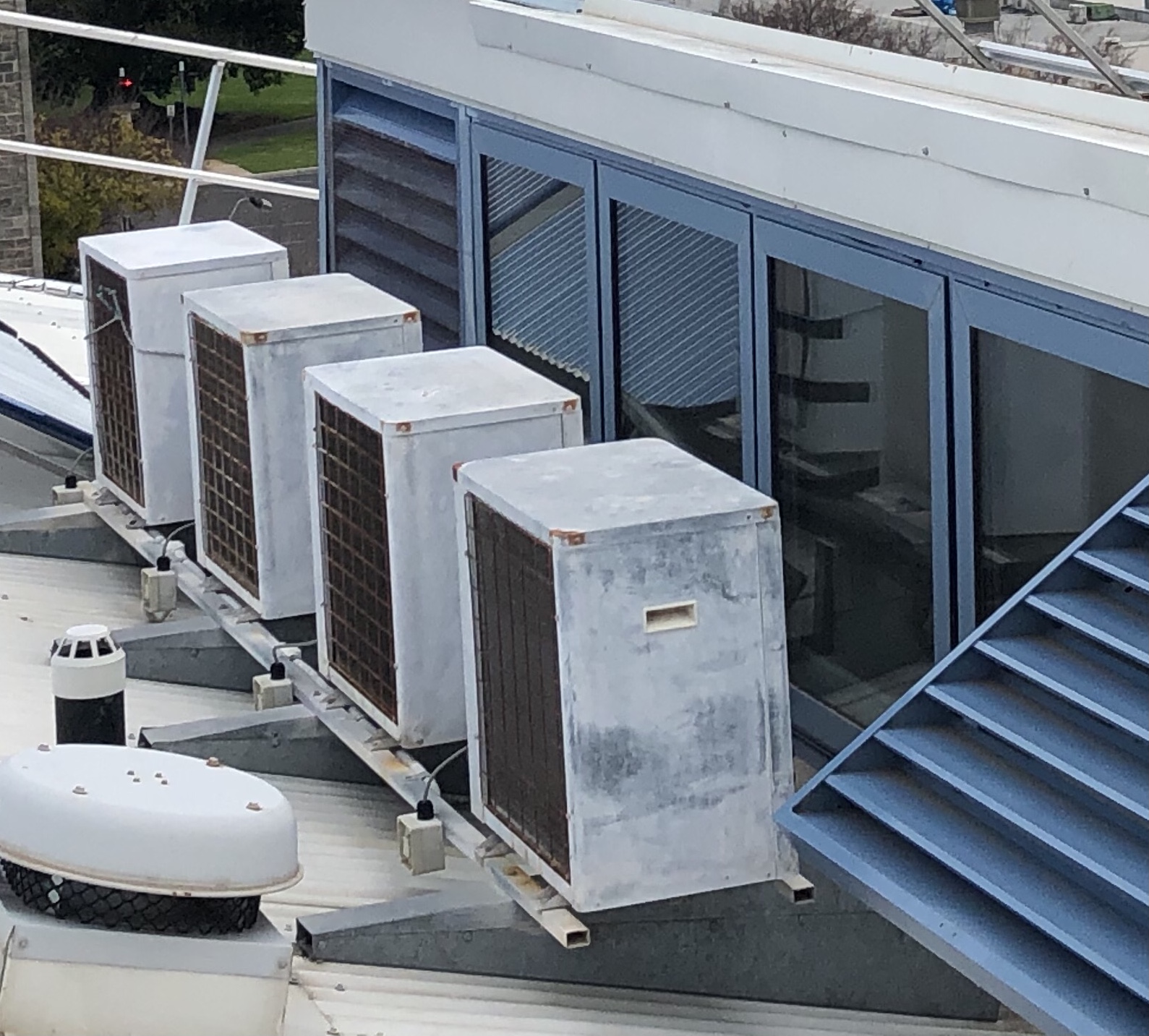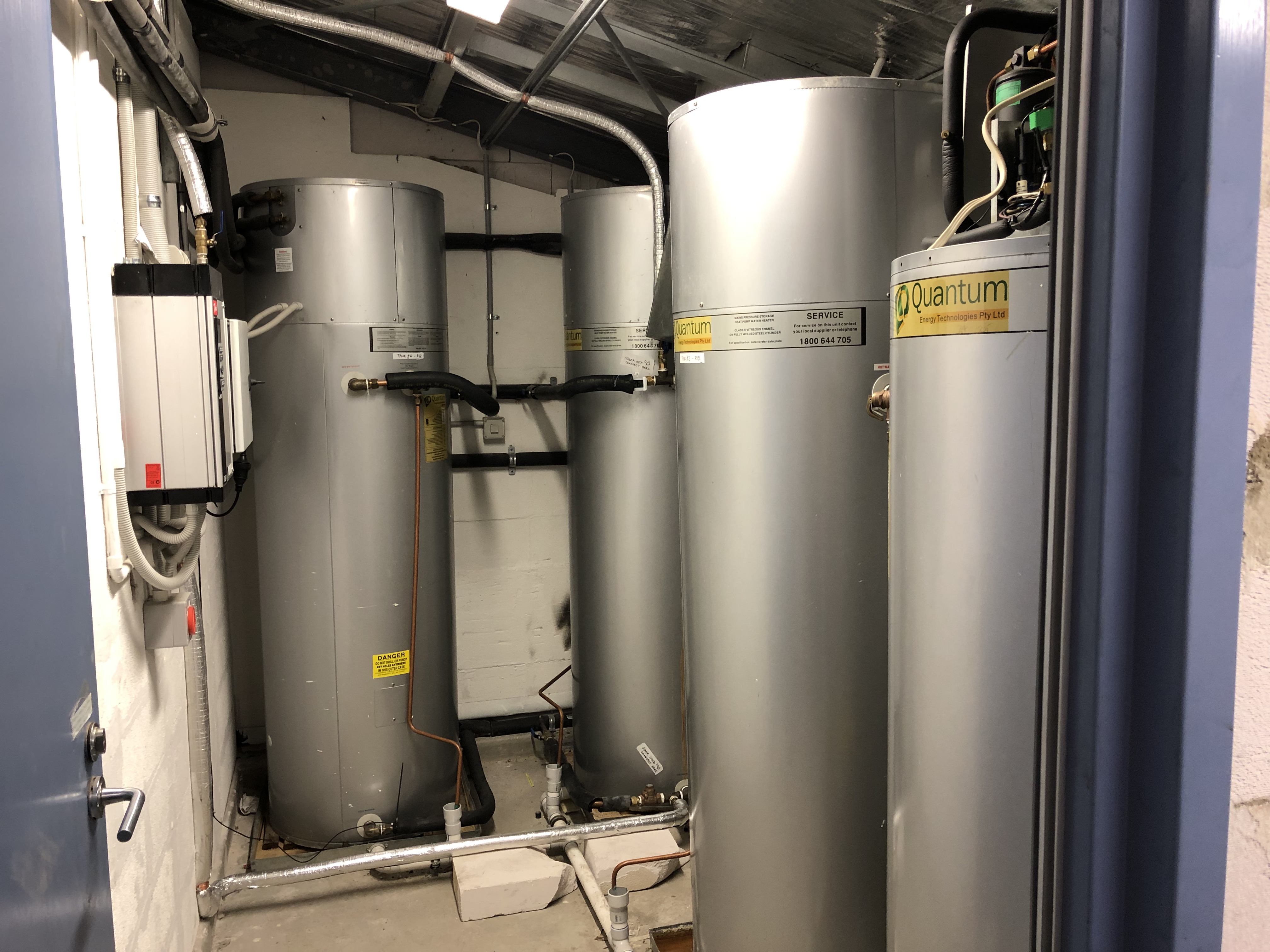Adventures with an environment-conscious inner-urban community
April 2016
Our apartment building (Sturt Apartments at Christie Walk) was nearly ten years old. It was time to start thinking about sustainability upgrades to reduce our carbon footprint.
Lighting was an easy place to start.
We worked with Adelaide lighting maintenance specialists, Globebusters, who replaced unreliable CFL lights in our atrium stairwell and entranceway with long-life LED oyster lights and floodlights. In the courtyard, twin LED sensor floodlights replaced the old energy-hungry incandescent lights.
May 2016
Hot water; one of life’s great privileges. But our little luxury comes at a cost for us, and a carbon-cost for our warming planet. It’s a particular issue in our 4-level block of 13 apartments.
The hot water system is in a plant room on the 4th level. So to ensure hot water is delivered without too much delay, there’s a recirculating main that snakes its way down around the building and back up to the plant room. That’s great for minimising water wastage whilst waiting for hot water to arrive, but it costs energy through heat losses along the recirculating main. The hot water system and the recirculating main were both running 24/7, so we installed two time-clocks:
- Recirculating main timer – turns off between 11:15pm and 6am.
- Hot water system heating timer – in warmer months (October to April) turns off between 7:30am and 10am, to delay reheating after peak morning usage till when there is surplus solar PV power.
July 2016
The hot water system itself was a state-of-the-art system when first installed in 2006. Four Quantum 315L heat pumps provide us with 1,260 litres of hot water storage for our 13 apartments.
Heat pumps are excellent. Effectively they are solar hot water systems, but without any panels on the roof.

Instead we have four small evaporator units on the roof. A fan draws air over the evaporators which contain a refrigerant. They work like refrigerators in reverse:
- The sun heats the air.
- The heat pumps grab the heat from the air and transfers it into the hot water storage tanks.

But with the system being 10 years old, and an expected life of 10 to 15 years, our thoughts turned to planning for replacement, to ensure we’re not pushed into a rushed decision if the system starts to fail.
But what’s best? Full replacement? Augmentation? A completely different approach?
We’d seen an evacuated tube solar system in action in 2015 and began investigations to see if it would suit our site. We obtained preliminary pricing for a Greenland system and an Apricus system, based on a full replacement.
But there were worries.
Why trash our Quantum heat-pump system when it was still functioning? The replacement quotes were expensive, ranging from $29k to $50k. There was an additional daunting problem in that the access hatch opening up to the fourth-level plant room needed enlarging to allow the new larger-diameter tanks to be installed. That would require serious concrete cutting, mess and additional cost.
But the biggest worry of them all: what if we spent $50k and the new system didn’t significantly reduce our power bills and carbon footprint? We put the project on hold while we researched alternative solutions.
Lessons learnt along the way:
- The heat pump evaporator fan unit can become severely iced-up in winter. If you’re in a frost-prone area, make sure the heat pump you install has an excellent automatic defrost cycle.
- Iced-up condition can also indicate low refrigerant charge; time to make a refrigeration service call.
You can continue reading of our adventure with Episode 2 – Doing a carbon inventory.
It’s part of our special series: Aiming beyond NetZero at Christie Walk – Adventures with an environment-conscious inner-urban community.


Episode 11 - Innovative solar, storage and sharing » Urban Ecology
[…] Episode 1 – In hot water again […]